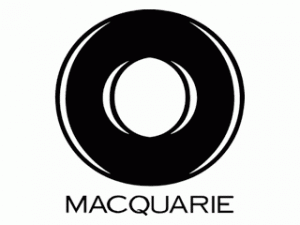Lieutenant Governor Spencer Cox, as part of his campaign for governor, recently challenged Utahns to send him their best big ideas, something audacious with impact across generations. Anyone who knows me knows where I’m going immediately.
For years, I’ve harped on there being no real broadband plan in Utah. The “plan” released almost five years ago was light on specifics and deferred far too much to the incumbent operators that have left us in an underserved mess. Since then, the Utah Broadband Outreach Center appears to have mostly gone dark. Website updates are sparse and agendas are often posted weeks or months after the actual meeting happened. Maps are often outdated assuming the links still work at all. With the big focus on rural economic development and remote work, this has become a foundational issue that requires all hands on deck.
The most baseline of things that has to happen is giving UBOC the funding and authority to build an accurate and useful map of wired and wireless broadband availability. I’ve had many conversations with local government officials who discount the poor state of broadband because the voluntary and unaudited submissions from providers misrepresent what the field looks like. When you don’t know where you are and that there’s a problem to be solved, you can’t chart an appropriate course. The map needs to have wired, fixed wireless, and mobile wireless data, updated at least annually, and audited for accuracy.
With a proper map in hand, we then need to focus on four key metrics: availability, affordability, quality, and competition.
Many homes in Utah do not have broadband access, even at the FCC’s inadequate definition of 25Mbps down, 3Mbps up. Even more only have a choice of a single provider at this speed. While this is more common in rural areas, it happens in the middle of urbanized areas of Sandy and Holladay too. A map helps us identify those coverage gaps so we know where to put our efforts.
Cost of broadband is often a barrier to adoption. DSL, while dog slow and antiquated, has high adoption in low and fixed income households because it’s very cheap, in the $20-25/mo range. Many middle and upper income households target around $70/mo, the standard going rate for gigabit fiber where it is available. In many cases, the cost of access often exceeds this and leaves people either buying less broadband than they need and relying on wireless service with monthly transfer caps, throttling, and signal issues.
While speed is the most readily and easily measured indicator, it is by no means the sole metric. Broadband also needs to have low latency to support voice and video communications or it will appear to be unresponsive. It also needs to be able to deliver consistent results, both for speed and latency. Unreliable and inconsistent quality of your connection can make it ineffective.
Competition is how we make sure broadband gets and stays good. It drives down prices, has higher customer satisfaction, and provides for a better product. Open access networks like UTOPIA provide robust competitive choice among many providers and open up broadband to be a free rather than captive market.
So how do we get there?
The biggest barrier to deploying networks is and always has been cost. Despite some improvement on best practices, Google Fiber learned very quickly that deploying fiber is an expensive proposition. Fixed wireless, while cheaper, also requires fiber to the tower and doesn’t deliver the same quality level as fiber. Mobile wireless has never and likely will never be in the same class because of the technical limitations. The only real option is to focus on fiber with wireless for edge cases and the hardest to reach areas.
Colorado provides some source of inspiration for how to tackle this problem. They provide grants and low-interest loans to cover deployment costs beyond what’s within a margin of the industry average, around $3500 per home. This targets the money at locations that are not served due to cost, but I think it needs to go further with conditions. If we’re going to promote competition which addresses affordability and quality, then we need to have a requirement that any funding only go towards open access networks with a minimum of three providers. This ensures that while solving the availability problem we do not also neglect the affordability, quality, and competition ones.
If you look to who has been doing the most work on improving broadband in Utah, it’s been primarily cooperatives (like South Central Communications), small rural telecoms with access to federal funding (Beehive, CentraCom, Emery Telecom), and municipal-lead efforts (Provo, Spanish Fork, the various member cities in UTOPIA). This isn’t to say that any of them achieves the ideal or has not encountered plenty of problems along the way, but they certainly understand the marketplace better than moribund incumbents like CenturyLink and Comcast, companies whose names are often used as “farm words”. Involving them in conversations, even if they aren’t entirely on board with the bold vision of universal open access fiber, is crucial to making it all work.
I don’t exaggerate when I say that a universal open access fiber network to every corner of the state would be as transformational, economically and socially, as rural electrification was last century. If you want a big bet that outlasts everyone alive, that’s where you should be all in.









